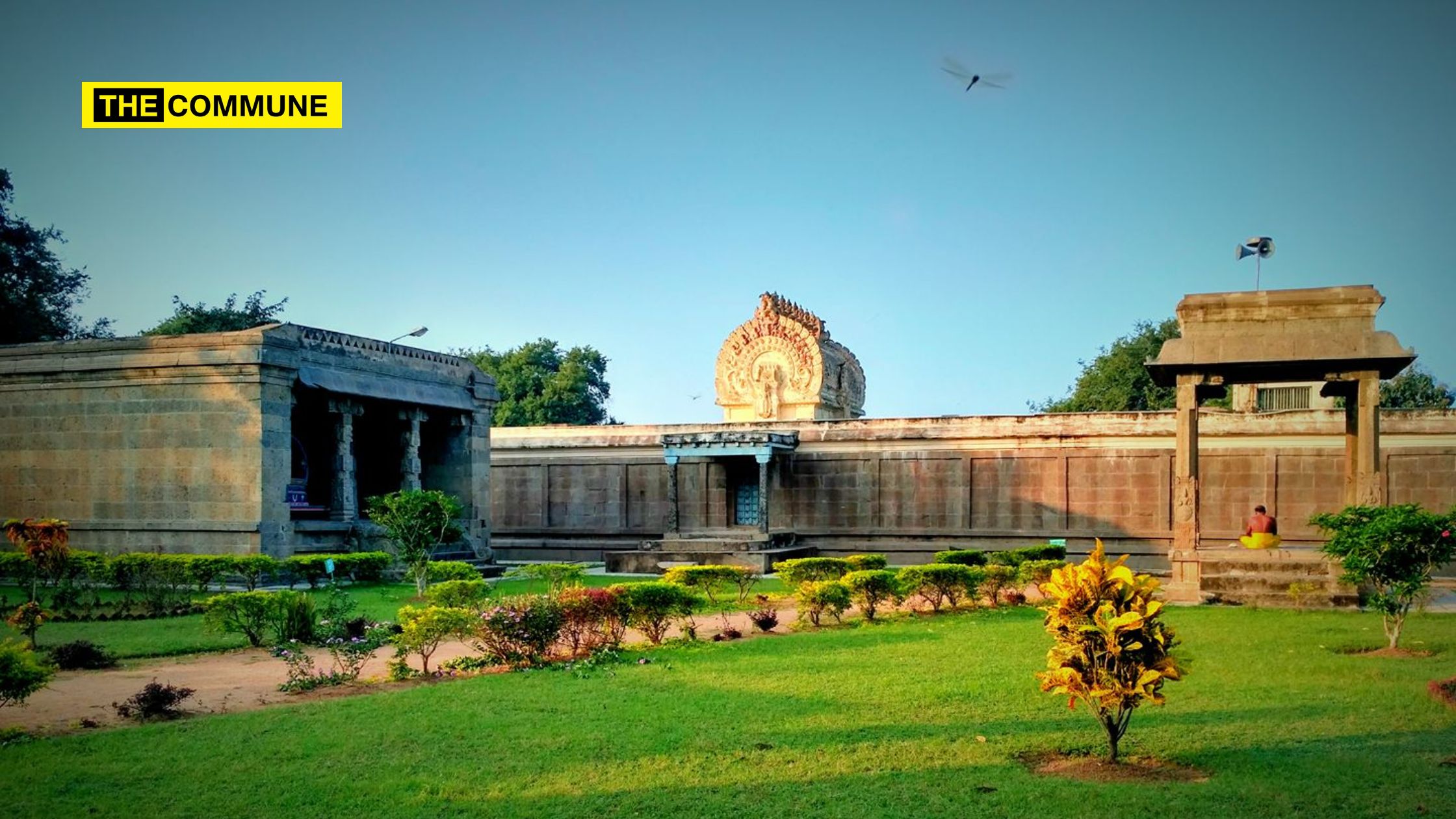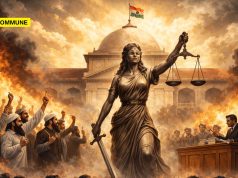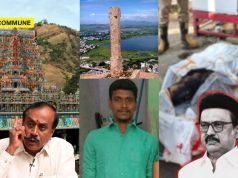
In a remarkable discovery, Dr. Vanjiyoor K. Panneerselvam, head of the Tamil Epigraphy Department of the Archaeological Survey of India (ASI), has unveiled detailed information about a 950-year-old temple that also functioned as hospital during the Chola dynasty. According to a report by BBC Tamil, Dr. Panneerselvam shared the historical significance and operational details of the Adular Salai hospital located at Thirumukkudal.
Dr. Panneerselvam explained the etymology of “Adular Salai,” breaking it down into “Adular” meaning one who is ill, and “Salai” meaning a medical institution, effectively making it a medical facility for the sick. He further detailed the land donations made in names such as Vaidya Virupthi, Vaidya Bhagam, Vaidya Bhogam, Vaidya Kani, and Adular Salaipuram, which were used to maintain the hospital and pay the salaries of its medical staff.
Thirumukkudal, situated on the banks of the Palar River at the confluence of the Palar, Cheyyar, and Vegavathi rivers, is where this ancient hospital was located. The Venkatesa Perumal temple here housed the Adular Salai hospital during the Chola rule, around A.D. 1068. An inscription on the eastern wall of the temple’s first prakara features a statue of Rajakesari Virarajendra Chola, detailing the establishment and functioning of the hospital.
Dr. Panneerselvam elaborated on the operations of Adular Salai based on these inscriptions, revealing that it provided medical care to temple workers and students of Vedic studies. The hospital had 15 beds for in-patients and was staffed by a team of seven: a doctor, a surgeon, two pharmacists, two nurses, and a public servant. Surgical treatments, referred to as Salliyakriya, were provided for major injuries, while pharmacists managed and dispensed medicines.
The detailed inscriptions also mention the roles of general physicians and their assistants, including salary details and the types of food served to patients. Notably, the hospital functioned in a part of the temple known as “Janatha Mandapam.”
Dr. Panneerselvam highlighted the names of various medicines used at the hospital, many of which are still in use today. These medicines include 1. Brahmayam Kadumbapuri 2. Vasaritaki 3. Gomutra Karithakai 4. Dasamoola Haritaki 5. Pallathaka Haritaki 6. Kandiram 7. Balageranda Oil 8. Cotton Balm 9. Lasunagayeranda oil 10. Uttama Karinnadi Tailam 11. Sukla Sikritam 12. Bilwadi Giridham 13. Mandukaravadigam 14. Thravathi 15. Vimalai 16. Zunori 17. Tamrathi 18. Vajrakalpa 19. Kalyanalavanam 20. Puranagiritham with descriptions and their corresponding ailments detailed in the Ayurvedic text ‘Sarakar Samhita’.
Additionally, Dr. Panneerselvam pointed out that similar hospitals, referred to as Adular Salai, operated in various locations under the Chola reign, including Chidambaram and Mayiladuthurai. Epigraphic evidence also indicates the existence of Adular Salai hospitals in Koil Devarayanpettai near Nannilam in Thanjavur district and at the Agnipureeswarar temple in Tirupugalur near Nannilam.
Thirumukkoodal Sri Appan Prasanna Venkatesa Perumal
Thirumukkoodal, a name derived from the confluence of the Palar, Vegavathi, and Cheyyar rivers, is revered as a sacred site akin to the Ganges. The confluence, known as Triveni Sangamam, holds the same sanctity as the Prayag, where a dip in the waters is believed to purify the soul. Nestled on the riverbanks, the temple offers a picturesque vista, with its precincts gracing the river’s edge. On one side of the river stands the ancient Sri Lakshmi Narasimhar temple in Pazhaya Seevaram, while the Sri Appan Prasanna Venkatesa Perumal temple adorns the opposite bank. The latter, boasting a history that stretches back to the 9th century, is a testament to the architectural endeavors of Raja Thondaimaan Chakravarthy, the ruler of Thondai Mandalam with its capital at Kanchipuram.
Legend narrates that King Thondaimaan, en route to Thirupathi for a divine audience with Lord Venkatesa Perumal, was divinely instructed to postpone his pilgrimage to defend his realm against an impending invasion. Following his victorious return, the king was graced by the Lord with His Sanku (Conch) and Chakra (Wheel), symbols that later disappeared only to be reinstated by Sri Ramanujar at the deity’s behest. It was here, at Thirumukkoodal, that the king received the Lord’s blessing in a standing posture, a departure from His usual reclining form. Overwhelmed with joy, the king embraced the deity, exclaiming ‘Appaney Venkatesa’ (Oh My Father Venkatesa!), bestowing upon the Lord the name ‘Appan Venkatesa Perumal’. It is said that this very king constructed the temple, as well as others in Thirupathi and Thirumalai Vaiyaavoor, known as the Southern Thirupathi.
The main idol, Sri Appan Venkatesa Perumal, stands regally, receiving adoration from Brigu Maharishi, Sri Markandeyar, and Sri Bhumadevi. The temple is also distinguished by its three sacred trees, Devadhaari, Vanni, and Sandhanam (Sandal). Celebrations like Kanchipuram Sri Varadaraja Perumal’s Parvettai and Vaikunda Ekadasi are observed with great fervor, drawing devotees to witness the deities’ joint appearance on ‘Kaanum Pongal’ Day and to honor the temple’s goddess, Sri Alarmel Mangai Thaayaar, who has her own dedicated shrine.
Guarded by the Archaeological Survey of India (ASI), the temple’s walls are adorned with inscriptions from various eras, including those of Raja Raja Chola I and Rajendra Chola. These inscriptions chronicle the temple’s storied past and the generous endowments it received. A medical facility, named after King Veera Chozhan and staffed with a dedicated team including a physician named Kodhandaraman Aswathaaman Bhattan, once served the temple community. The inscriptions provide a detailed account of the hospital’s operations, including the salaries of its staff and the medicines it stocked.


(Image Credit: Dharsanam Blog)
The temple also played a role in the spiritual life of the community, with provisions for the recitation of ‘Thiruvaimozhi’ during the Chola period. Historical records place Thirumukkoodal within the subdivision of Madhuranthaka Chathurvedhimangalam, now known as Madhuranthakam, which was part of the Kalathur Kottam district within Jayamkonda Chola Mandalam.
(With inputs from BBC Tamil)
Subscribe to our channels on Telegram, WhatsApp, and Instagram and get the best stories of the day delivered to you personally.




